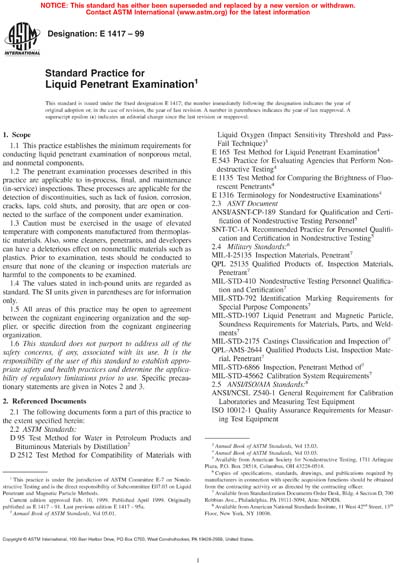Historical
ASTM E1417-99
Standard Practice for Liquid Penetrant Examination
This practice establishes the minimum requirements for conducting liquid penetrant examination of nonporous metal, and nonmetal components. Note 1-When coordinated through the Department of Defense (DoD) this practice will be a direct replacement of MIL-STD-6866. 1.2 The penetrant examination processes described in this practice are applicable to in-process, final, and maintenance (in-service) inspections. These processes are applicable for the detection of discontinuities, such as lack of fusion, corrosion, cracks, laps, cold shuts, and porosity, that are open or connected to the surface of the component under examination. 1.3 Caution must be exercised in the usage of elevated temperature with components manufactured from thermoplastic materials. Also, some cleaners, penetrants, and developers can have a deleterious effect on nonmetallic materials such as plastics. Prior to examination, tests should be conducted to ensure that none of the cleaning or inspection materials are harmful to the components to be examined. 1.4 The values stated in inch-pound units are regarded as standard. The SI units given in parentheses are for information only. 1.5 This standard does not purport to address all of the safety concerns, if any, associated with its use. It is the responsibility of the user of this standard to establish appropriate safety and health practices and determine the applicability of regulatory limitations prior to use. Specific precautionary statements are given in Notes 3 and 4.
ASTM International [astm]

